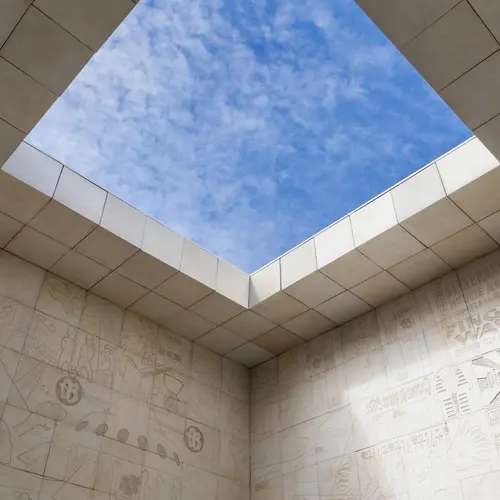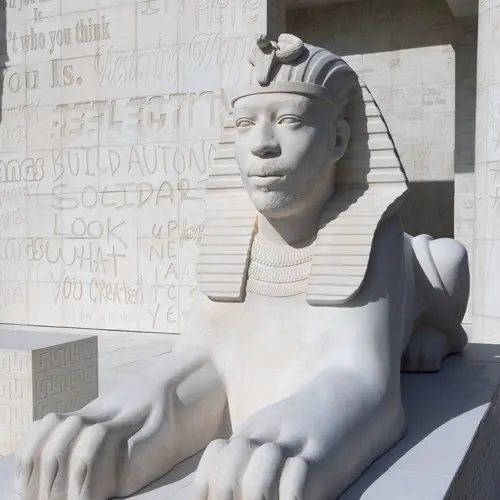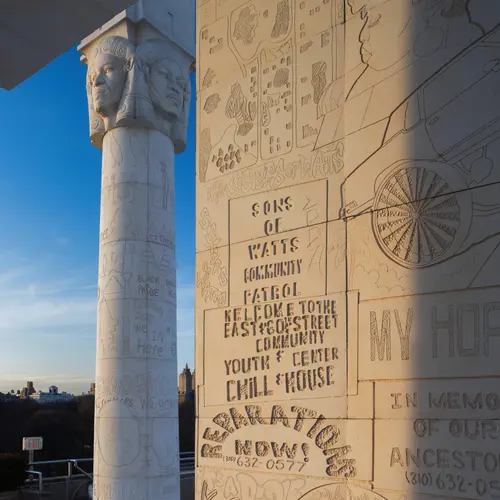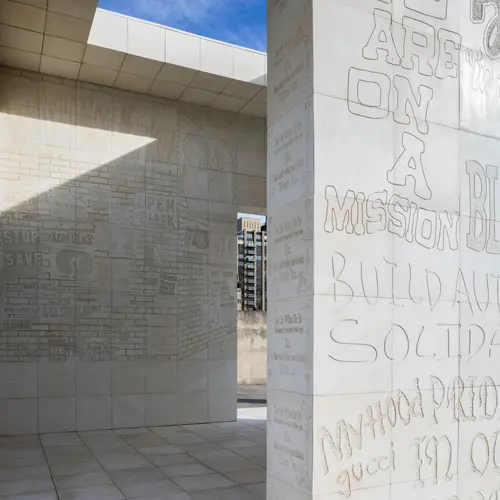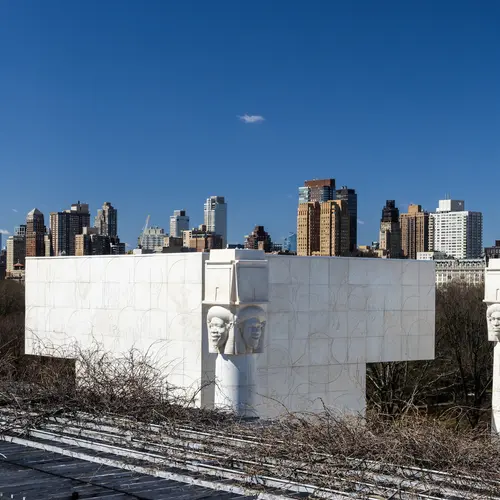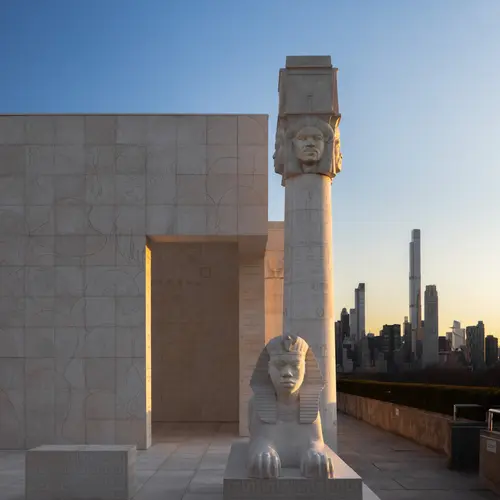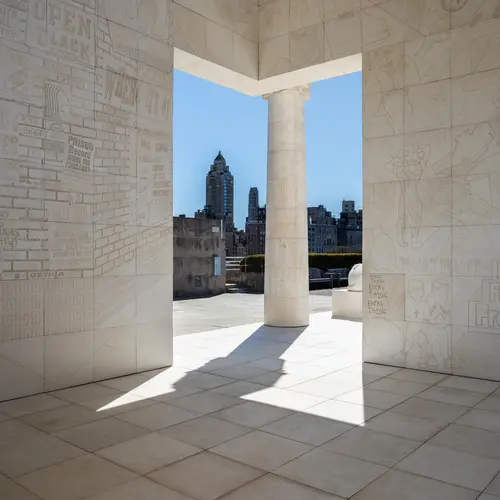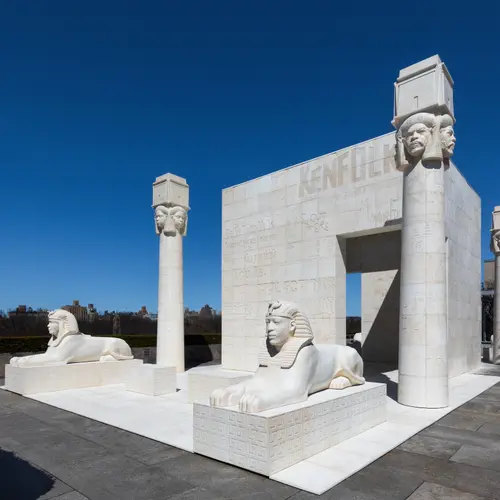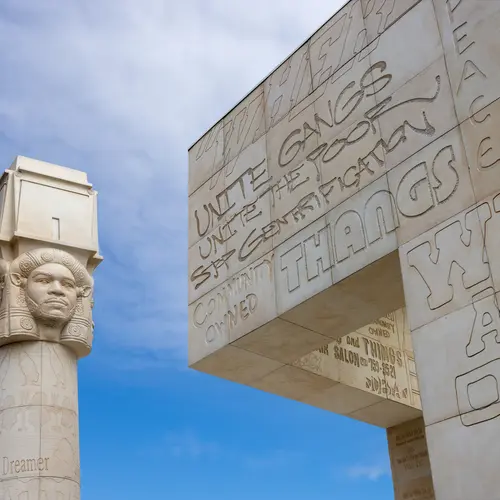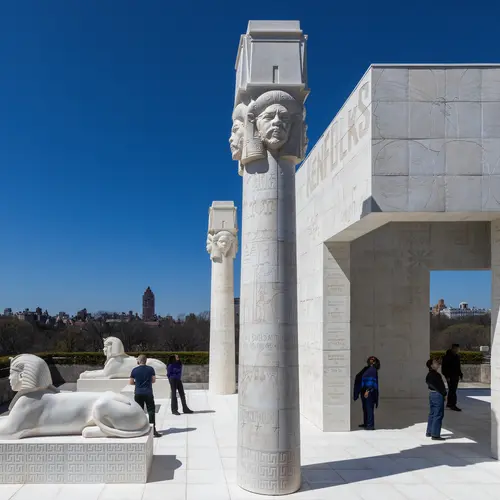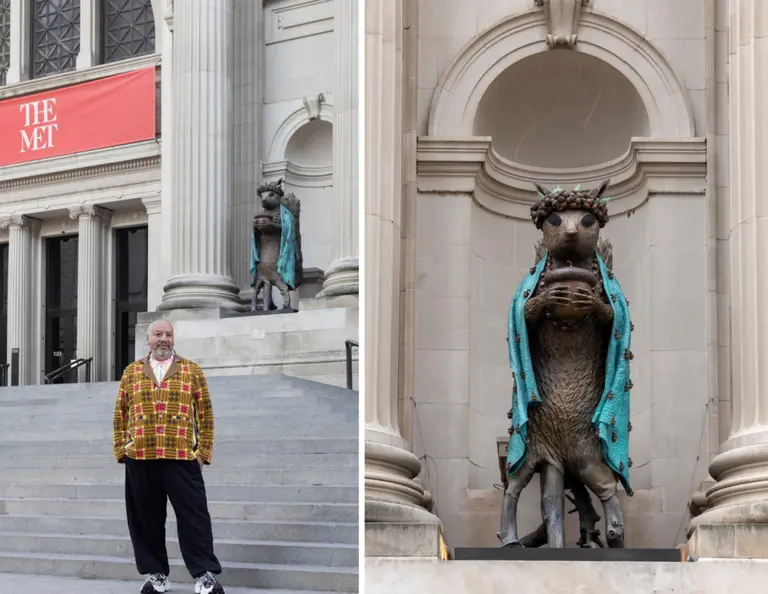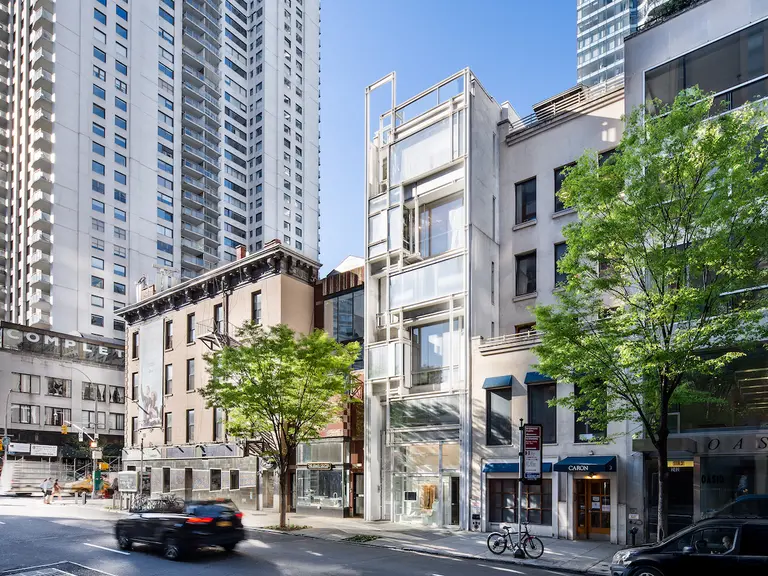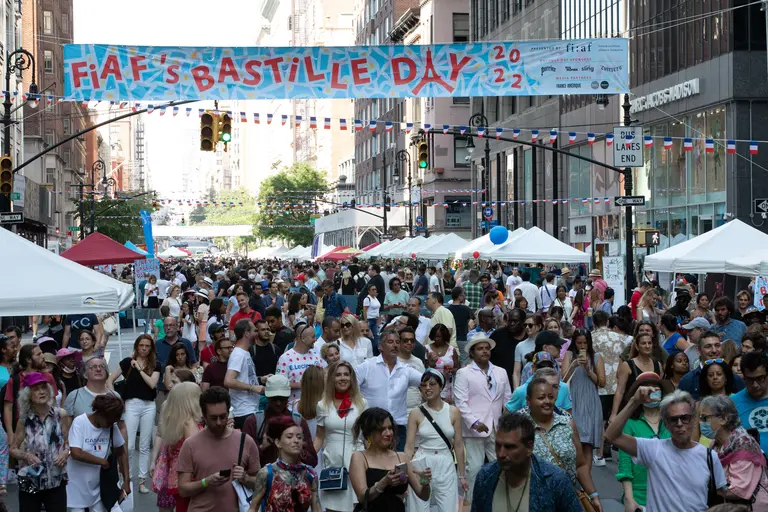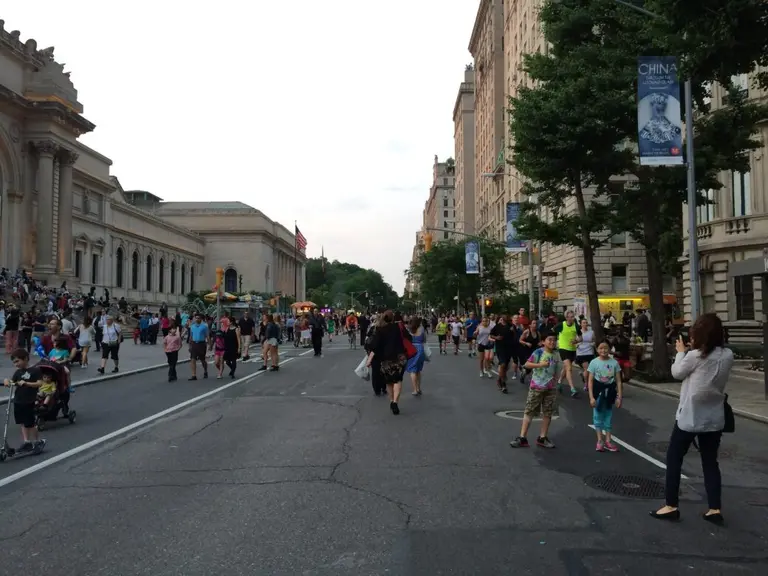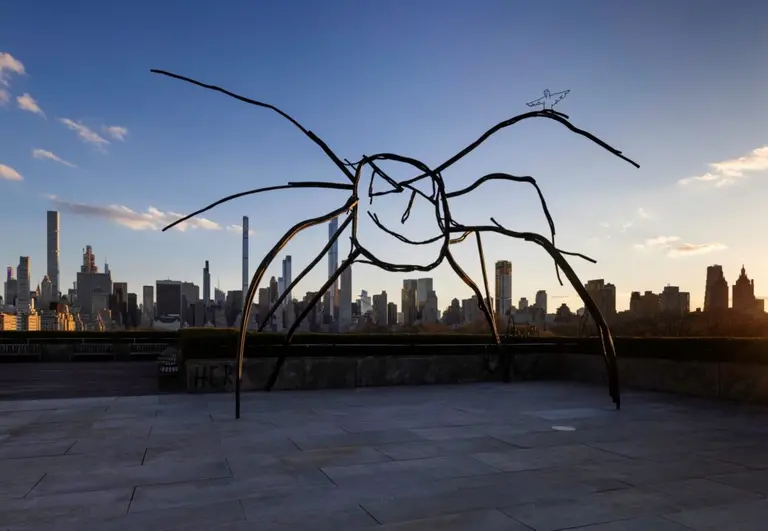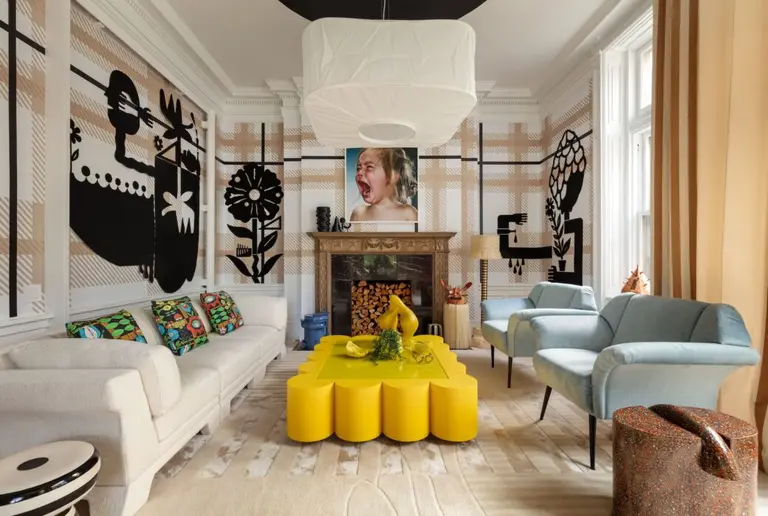Ancient Egypt and South Central L.A. meet in monumental installation on the Met’s roof
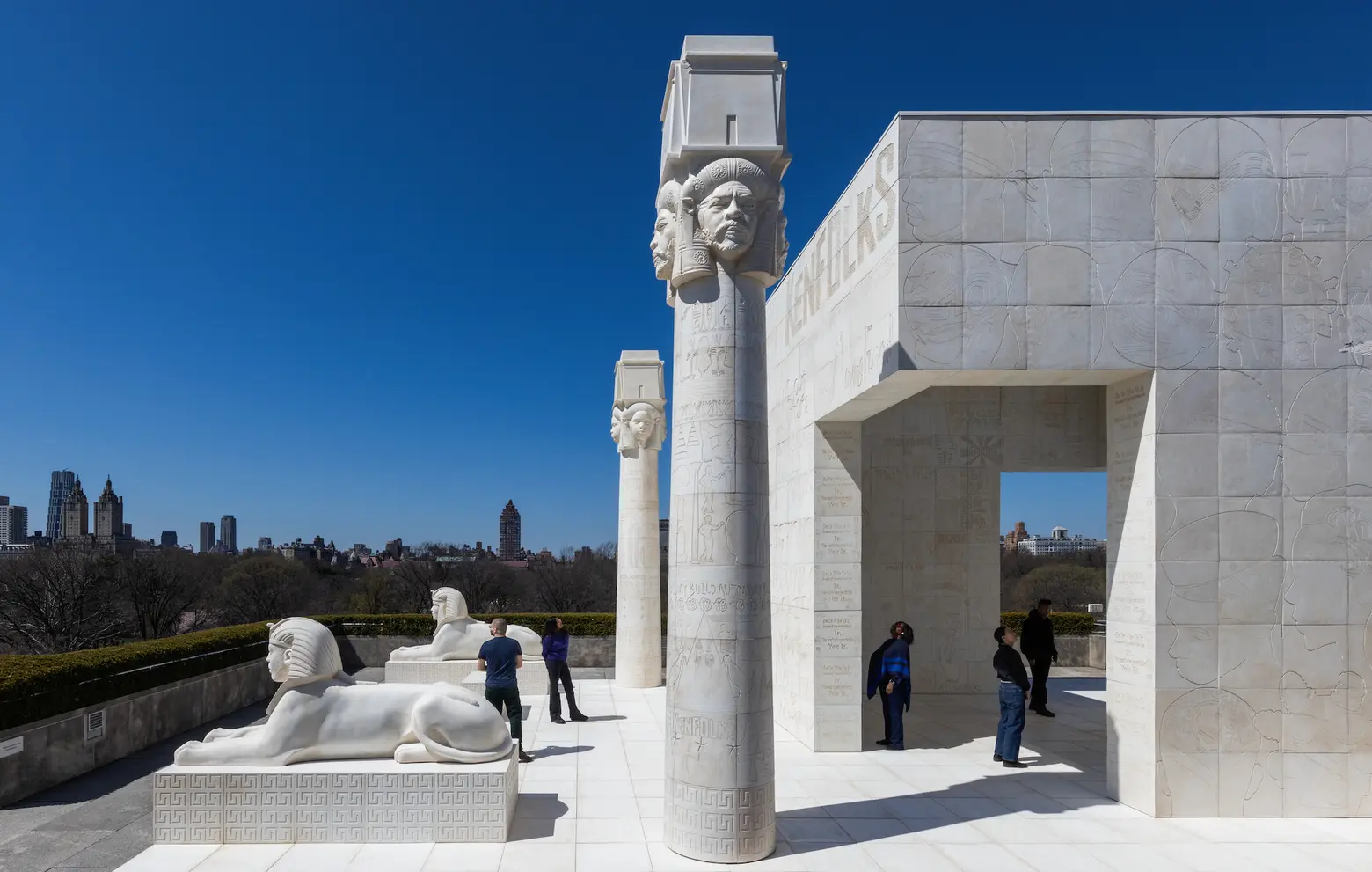
Lauren Halsey (American, b.1987) Installation view of The Roof Garden Commission: Lauren Halsey, “the eastside of south central los angeles hieroglyph prototype architecture(I),”2022 ©Lauren Halsey. Courtesy of the artist; David Kordansky Gallery, Los Angeles/New York. Image credit: The Metropolitan Museum of Art, Photo by Hyla Skopitz
The Metropolitan Museum of Art’s latest rooftop commission brings to life the history of South Central Los Angeles with the use of ancient Egyptian architecture. Created by artist and activist Lauren Halsey, “the eastside of south central los angeles hieroglyph prototype architecture (I)” consists of a cube-like structure that rises 22 feet tall and has more than 750 glass-fiber-reinforced concrete tiles, surrounded by four columns and four sphinxes. Located on the museum’s Iris and B. Gerald Cantor Roof Garden, the towering structure provides a new perspective of Central Park and the city skyline through an open ceiling and large entryways.
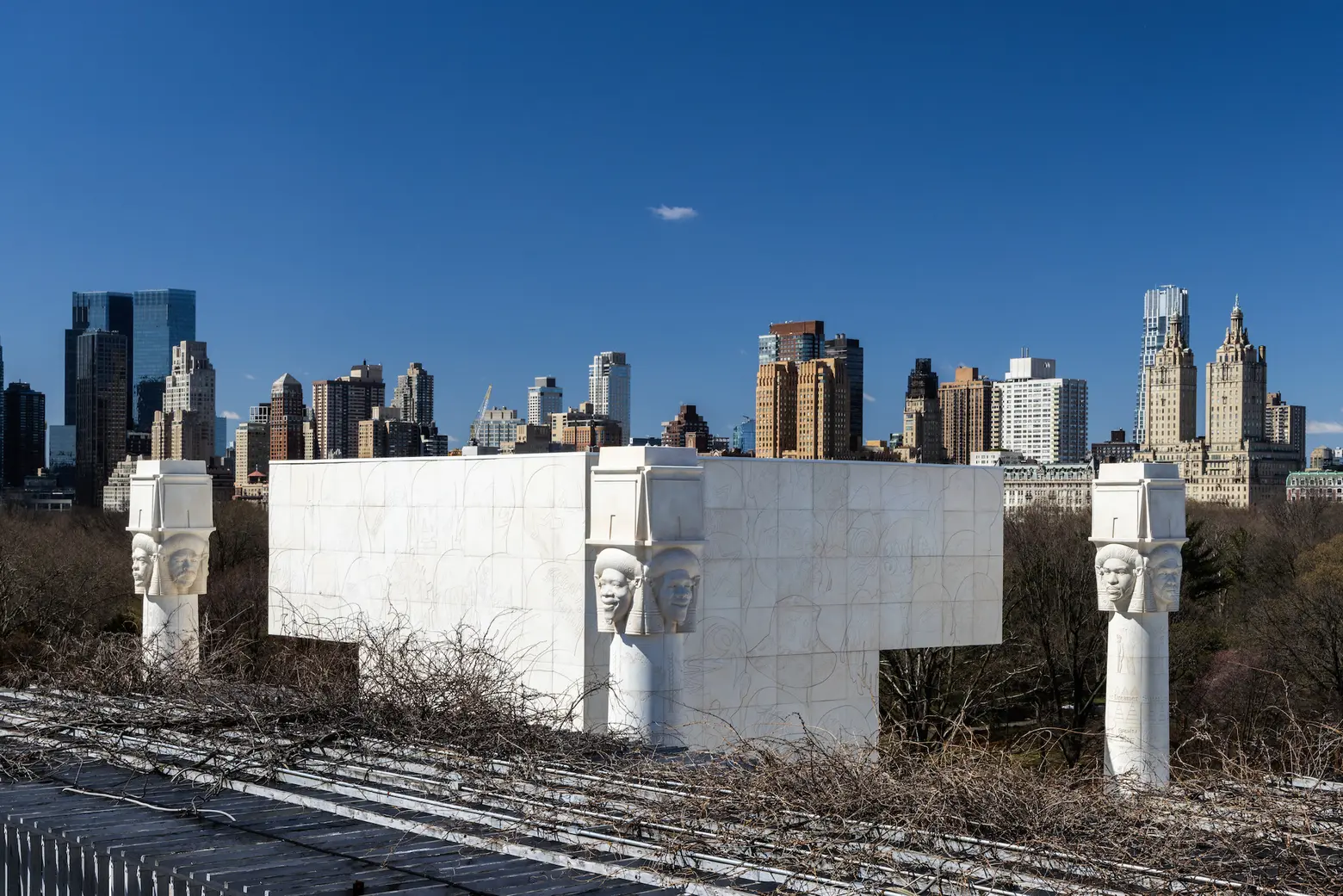
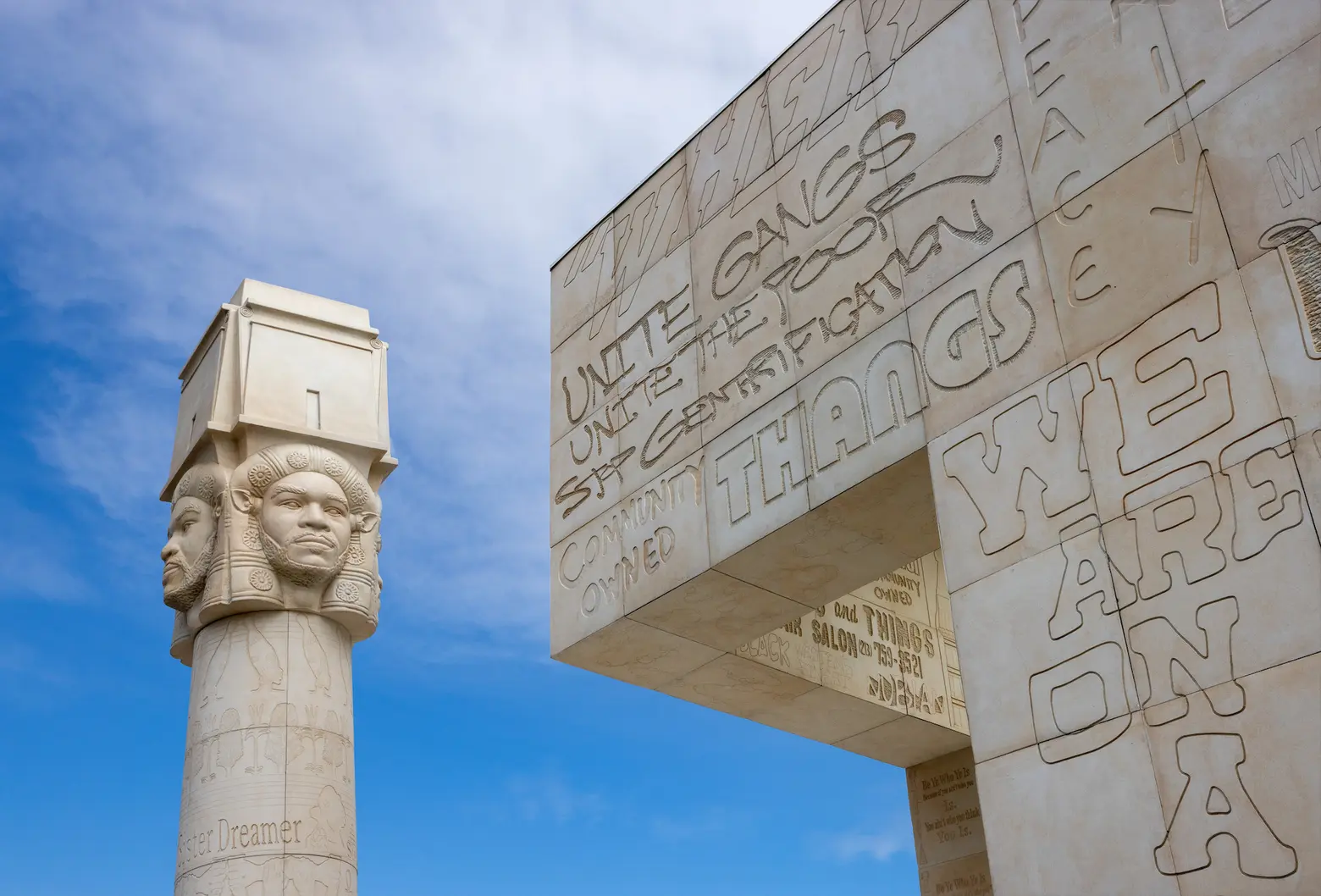
Lauren Halsey (American, b.1987) Installation view of The Roof Garden Commission: Lauren Halsey, “the eastside of south central los angeles hieroglyph prototype architecture(I),”2022 ©Lauren Halsey. Courtesy of the artist; David Kordansky Gallery, Los Angeles/New York. Image credit: The Metropolitan Museum of Art, Photo by Erica Allen
While the installation is inspired by ancient Egyptian architecture, even more specifically The Met’s Temple of Dendur, much of the actual detailing and content is highly personal to Halsey and her community.
As the New York Times reported, the faces found on four sphinxes that surround the central structure are portraits of the artist’s mother, cousin, brother, and life partner. The same goes for the faces found on the columns, which are representations of important people in Halsey’s life.
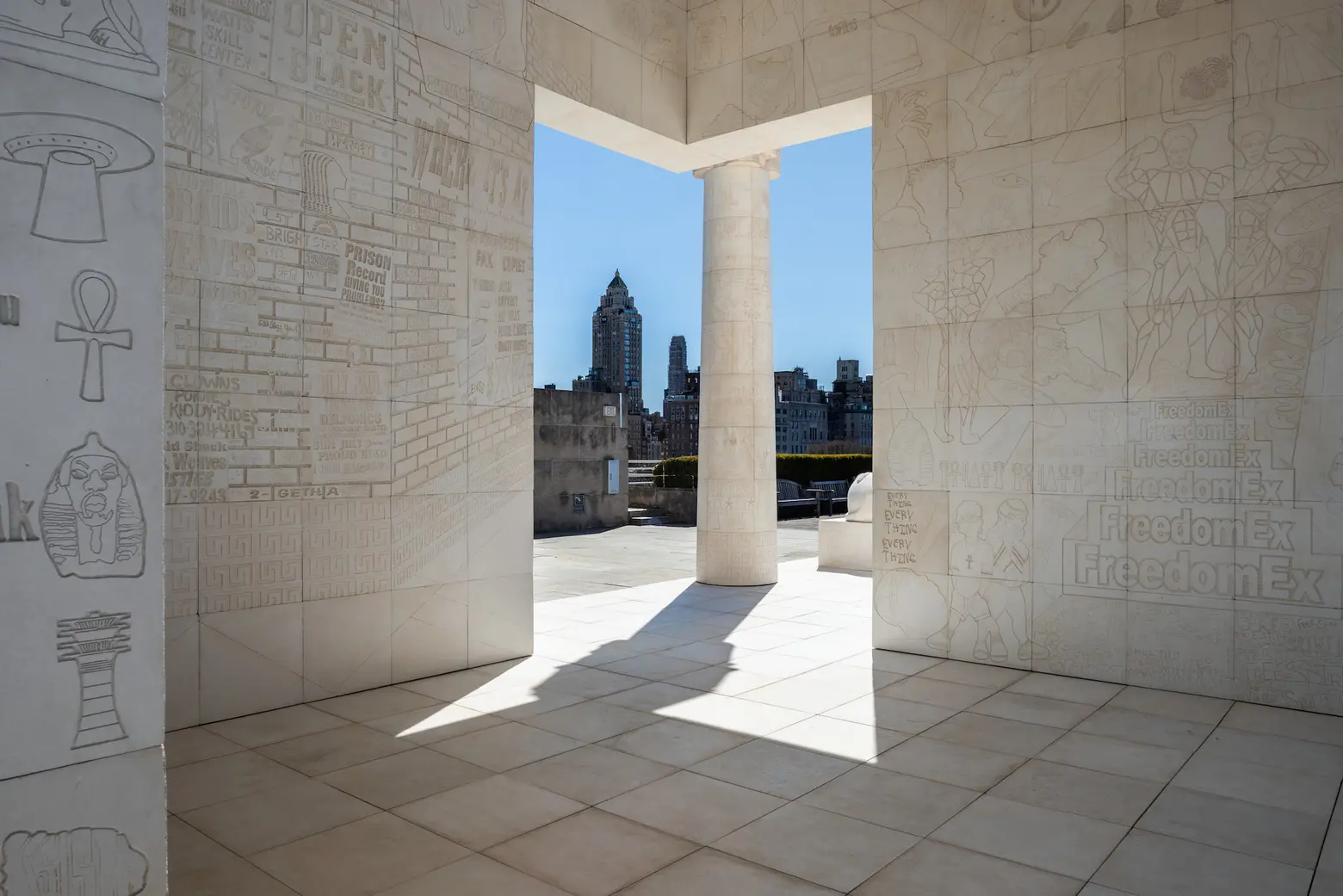
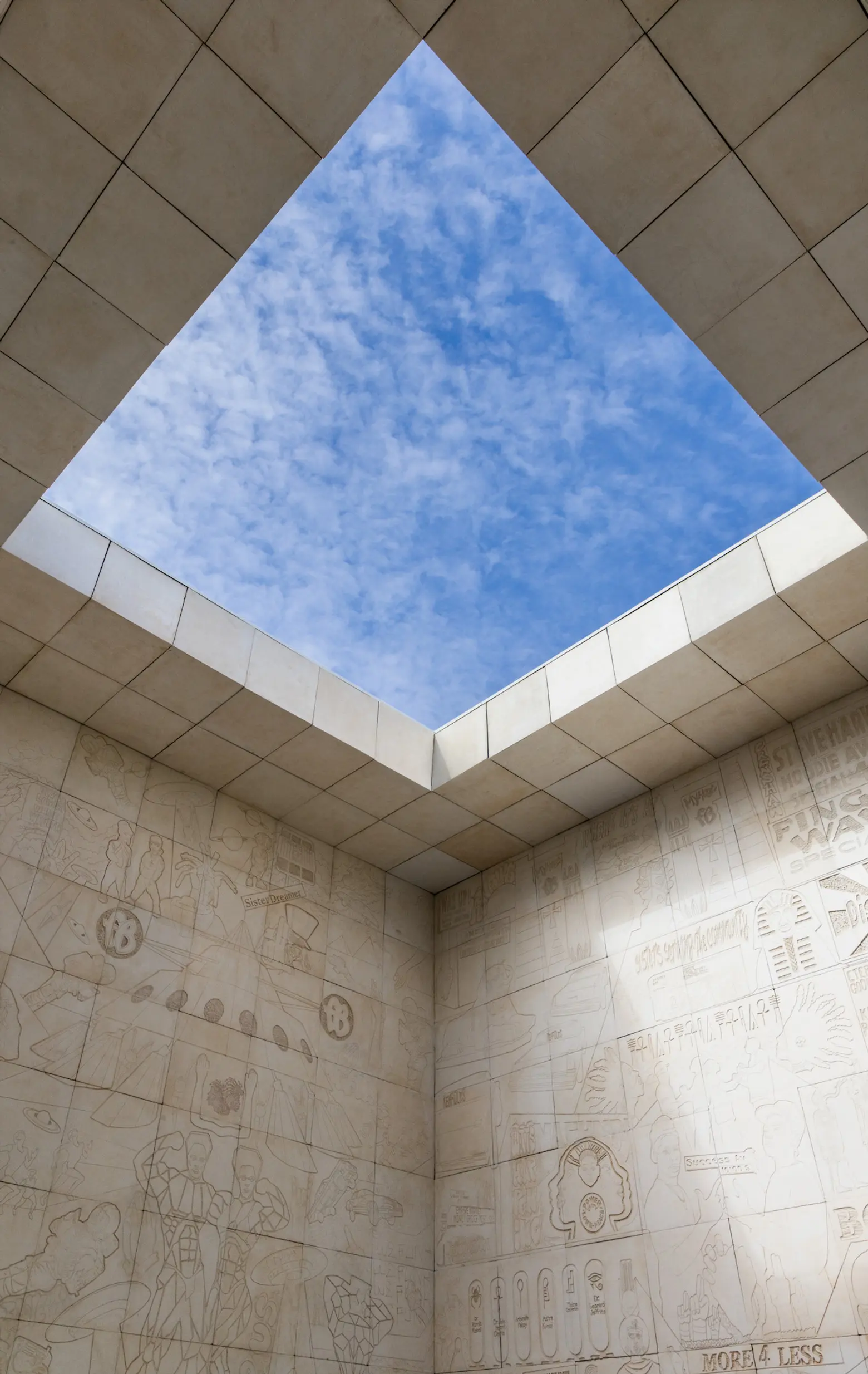 Lauren Halsey (American, b.1987) Installation view of The Roof Garden Commission: Lauren Halsey, “the eastside of south central los angeles hieroglyph prototype architecture(I),”2022 ©Lauren Halsey. Courtesy of the artist; David Kordansky Gallery, Los Angeles/New York. Image credit: The Metropolitan Museum of Art, Photo by Erica Allen
Lauren Halsey (American, b.1987) Installation view of The Roof Garden Commission: Lauren Halsey, “the eastside of south central los angeles hieroglyph prototype architecture(I),”2022 ©Lauren Halsey. Courtesy of the artist; David Kordansky Gallery, Los Angeles/New York. Image credit: The Metropolitan Museum of Art, Photo by Erica Allen
The structure was designed by Halsey to be “inhabited” by The Met’s visitors, who upon entering the cube will be able to read the dense collage of phrases, words, and illustrations that adorn the walls. These phrases are all drawn from specific language and symbols used in the historically Black neighborhood of South Central Los Angeles.
“My installation for The Met’s Roof Garden reflects my interest in conflating narratives from contemporary South Central Los Angeles with those evoked in ancient pharaonic architecture. My hope is that viewers in New York feel the connections intuitively,” Halsey stated.
Depictions of commercial signage advertising Black-owned businesses can be found throughout the inscriptions, as well as statements of protest, and words of hope to continue the fight for advocacy, according to the New York Times.

Halsey referenced many items from The Met’s collections, including a variety of ancient Egyptian Old Kingdom sculptures, decorative details on tombs, and even a map of Seneca Village, the thriving 19th-century Black settlement that was located in what is now Central Park.
“We are incredibly excited for visitors to experience Lauren Halsey’s magnificent commission for the Museum’s Cantor Roof Garden. With this installation, Halsey channels The Met’s unparalleled Egyptian Art collections through the lens of Afrofuturism, while also creating a powerful form of documentation of her neighborhood in South Central Los Angeles,” Max Hollein, Marina Kellen French Director of The Met, said.
“Engaging with the past, while also exploring a space of speculative imagination, Halsey offers us a powerful statement about civic space, social activism, and a reconsideration of the possibilities for architecture and community engagement.”
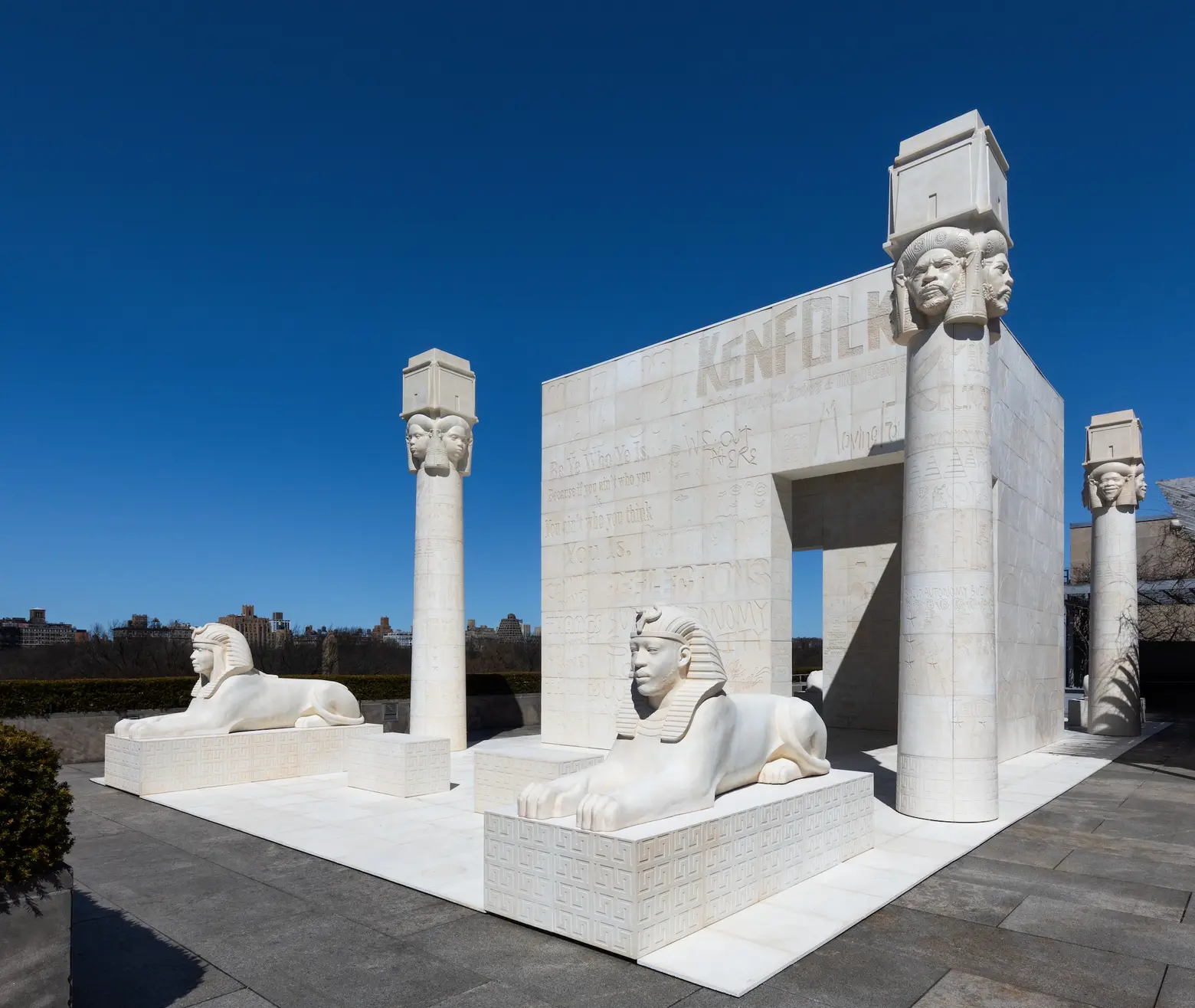
Halsey hopes to one day reconstruct the piece in her hometown of South Central to serve as a public, community center that also functions as a civic monument and a collaborative work of art, according to the Times.
The installation is part of the Rooftop Garden Commission series, established by The Met’s Department of Modern and Contemporary Art in 2013.
The installation will be on view through October 22, 2023.
RELATED:
- The Met’s latest rooftop installation features a swaying Big Bird overlooking Central Park
- This year’s Met roof garden installation tackles ‘the wall’
